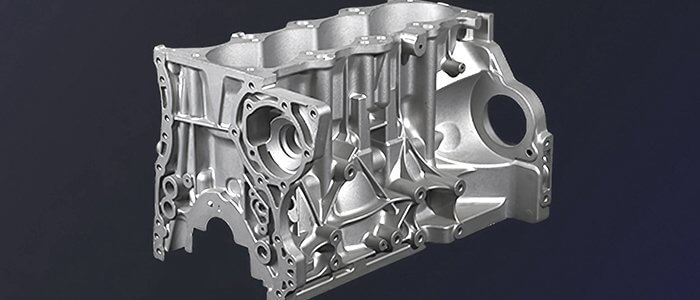Aluminum, is a versatile and widely used metal, For example, an alumina ceramic filter is a classic application, that owes much of its popularity to its remarkable properties, including its relatively low density, corrosion resistance, and excellent thermal and electrical conductivity.
Aluminum alloys, which are created by mixing aluminum with other elements, further enhance these properties and introduce unique characteristics that suit various applications. One crucial aspect of these alloys is their melting point temperature, which plays a vital role in the manufacturing processes of countless industries.
Melting Point Temperatures of Different Aluminum Alloys:
Aluminum alloys encompass a vast range of compositions, each tailored to specific purposes. These alloys exhibit varying melting point temperatures due to the presence of alloying elements. Below are some common aluminum alloys and their approximate melting point temperatures:

Alloy 1100: This pure aluminum alloy has a melting point of around 660°C (1220°F). It is characterized by its excellent corrosion resistance and high electrical conductivity, making it suitable for applications like food packaging, household utensils, and conductive materials.
Alloy 3003: With a melting point similar to that of Alloy 1100, around 660°C (1220°F), Alloy 3003 offers improved strength due to the addition of manganese. It is commonly used in general-purpose applications like cooking utensils, decorative trim, and chemical equipment.
Alloy 6061: This popular alloy, known for its high strength and good formability, has a higher melting point of approximately 582°C (1080°F). Alloy 6061 is commonly used in aerospace, automotive components, and structural applications.
Alloy 7075: With a melting point of around 595°C (1103°F), Alloy 7075 is renowned for its exceptional strength-to-weight ratio. It is widely used in aerospace, military, and high-stress applications.
Alloy 5083: This alloy, often used in marine applications due to its excellent corrosion resistance, has a melting point around 570°C (1058°F). Alloy 5083 is well-suited for shipbuilding and other underwater structures.
Differences Between Parent Alloys in Aluminum Foundries:
Parent alloys, also known as primary alloys or base alloys, serve as the foundation for creating various aluminum alloys by adding specific alloying elements. These elements impart unique characteristics to the alloys, enabling them to meet specific requirements. Here are some key parent alloys and their effects when alloying elements are introduced:
Alloy 1XXX: These alloys are almost pure aluminum with minimal additions of other elements. They exhibit excellent corrosion resistance and high thermal and electrical conductivity. They are commonly used in applications where these properties are crucial.
Alloy 3XXX: These alloys include manganese as the primary alloying element. They offer improved strength and formability compared to pure aluminum. Alloy 3003 is a common representative of this group.
Alloy 6XXX: These alloys contain silicon and magnesium, resulting in a combination of strength, formability, and corrosion resistance. Alloy 6061 is a widely used example, favored for its versatility and machinability.
Alloy 7XXX: These alloys incorporate zinc as a primary alloying element. They are known for their exceptional strength and toughness. Alloy 7075, for instance, is highly sought after in applications requiring high performance under stress.
Alloy 5XXX: These alloys incorporate magnesium as the primary alloying element and are highly corrosion-resistant. Alloy 5083, due to its excellent seawater resistance, finds applications in marine environments.
Conclusion
In conclusion, the melting point temperatures of various aluminum alloys play a pivotal role in determining their suitability for specific applications. Different parent alloys, each with its unique blend of alloying elements, yield alloys with distinct characteristics. Whether it’s the corrosion resistance of Alloy 5052 or the strength of Alloy 7075, understanding these differences allows engineers and manufacturers to select the optimal alloy for each project. As technology advances, the ability to manipulate and customize these alloys further expands, opening new avenues for innovation across industries. Although these alloys are by adding different other metal elements to change the characteristics of the alloy, in the process of smelting and casting, it is essential to use a filter material, which is an alumina ceramic foam filter.

